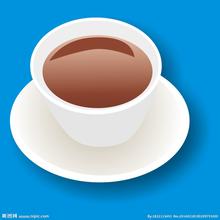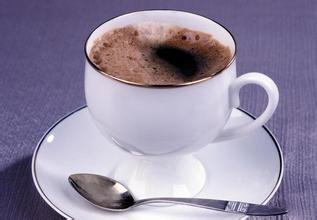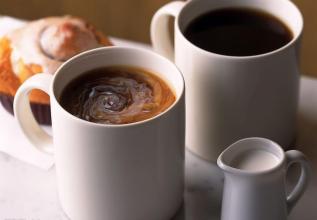What will be the flavor of the same kind of coffee with different degrees of roasting?

40% urban roasted Kenyan coffee, or bright Central American coffee, using balanced, moderately sour, good-tasting Central American coffee, but also can be mixed with different degrees of roasting of the same coffee;
60% city-wide roasted Colombia Tuluni, or Nicaragua La Illusion coffee, etc.
40% of city-roasted coffees are the same (roasted to the end of the first burst)
Our exhibition is a great place to sample common coffee blends, and roasters bring their best coffee blends here for everyone to taste. At the American Specialty Coffee Association exhibition in 1998, there were many "Viennese coffee" blends that used 30% to 40% Kenyan coffee to emphasize their acidic taste. This blend improves the acidity of the coffee and makes it taste much better than Kenyan coffee.
Drip coffee blend: mocha-java coffee, one can't help but think, blend coffee and home coffee is as old. The combination of a thick, average quality java with a moderate, fruity, more acidic mocha was the only two coffees available at the time. Is mixing these two coffees just a habit? Or is it because this combination improves their taste? In any case, the combination of these two coffees can make a coffee drink that tastes richer than either. Even with the simple coffee roasting and making tools of the time, it was incredible that such a rich blend of mocha and java could be made. It is not difficult to make a good coffee from two very good coffees. Commercially, coffee blending is to make a coffee beverage that tastes quite good from several coffee of poor quality. The original "mocha java" coffee is a blend of yemeni mocha coffee and indonesian java coffee. But it is also possible to use any Indonesian coffee, blended with any Ethiopian or Yemeni coffee. The usual blend ratio is one-to-one, or Indonesia has slightly more beans, such as 55:45. And the really good result that we've had is a combination of Hirazi or Dhamari beans from Yemen and Batak Mandheling or Sulawesi Toraja from Sumatra.
Important Notice :
前街咖啡 FrontStreet Coffee has moved to new addredd:
FrontStreet Coffee Address: 315,Donghua East Road,GuangZhou
Tel:020 38364473
- Prev

The basic knowledge of coffee bean blending what is coffee bean blending?
Before blending any coffee, you should first understand the taste characteristics of all kinds of coffee, and at least make it clear in your heart that the taste of the kind of coffee you want to mix can not be achieved by any single coffee. It would be a pity if the blended coffee doesn't taste better than one or more of them. It would be better not to match. If you use which qualities
- Next

Espresso blended with decaf Brazilian decaf beans
Espresso with several of my favorite decaf coffees if you need decaf, prepare some water-processed Brazilian decaf beans. Use 50% of this coffee bean, plus some other coffee beans with different flavors. If you want coffee that is almost completely decaffeinated, you can choose one of the following combinations: 50%
Related
- Does Rose Summer choose Blue, Green or Red? Detailed explanation of Rose Summer Coffee plots and Classification in Panamanian Jade Manor
- What is the difference between the origin, producing area, processing plant, cooperative and manor of coffee beans?
- How fine does the espresso powder fit? how to grind the espresso?
- Sca coffee roasting degree color card coffee roasting degree 8 roasting color values what do you mean?
- The practice of lattes: how to make lattes at home
- Introduction to Indonesian Fine Coffee beans-- Java Coffee producing area of Indonesian Arabica Coffee
- How much will the flavor of light and medium roasted rose summer be expressed? What baking level is rose summer suitable for?
- Introduction to the characteristics of washing, sun-drying or wet-planing coffee commonly used in Mantenin, Indonesia
- Price characteristics of Arabica Coffee Bean Starbucks introduction to Manning Coffee Bean Taste producing area Variety Manor
- What is the authentic Yega flavor? What are the flavor characteristics of the really excellent Yejasuffi coffee beans?

